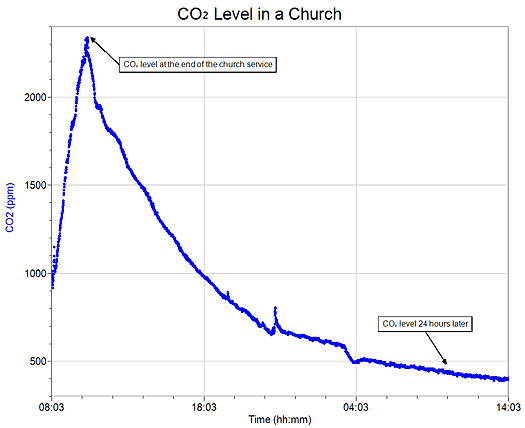Roland Stout, Associate Professor of Chemistry at the University of North Carolina at Pembroke, challenged his environmental chemistry class to find an interesting and environmentally significant carbon dioxide source or sink and to verify their findings using a CO2 sensor. Roland asked his students to follow the scientific method and design a sampling protocol appropriate for their measurement. The only help he gave them was to explain how to use the probe, and he helped them to program the LabPro interfaces for remote data collection based on their protocol.
All of the students made interesting and innovative measurements that they presented to their peers. One student suspended the probe from a railroad overpass, intercepting the exhaust plumes from the three engines pulling a train. Another student placed the unit in his church as people were gathering for a service. The CO2 levels climbed to over 2400 ppm by the end of the service (see the Logger Pro graph below). A third student collected an hour of data from the middle of a holly shrub at mid-day, and again after midnight. The results were not what they expected and the students were left to explain what might account for the differences (in this case, high winds).
Roland felt this assignment might well have been the most productive class session of the semester from the perspective of student learning.

